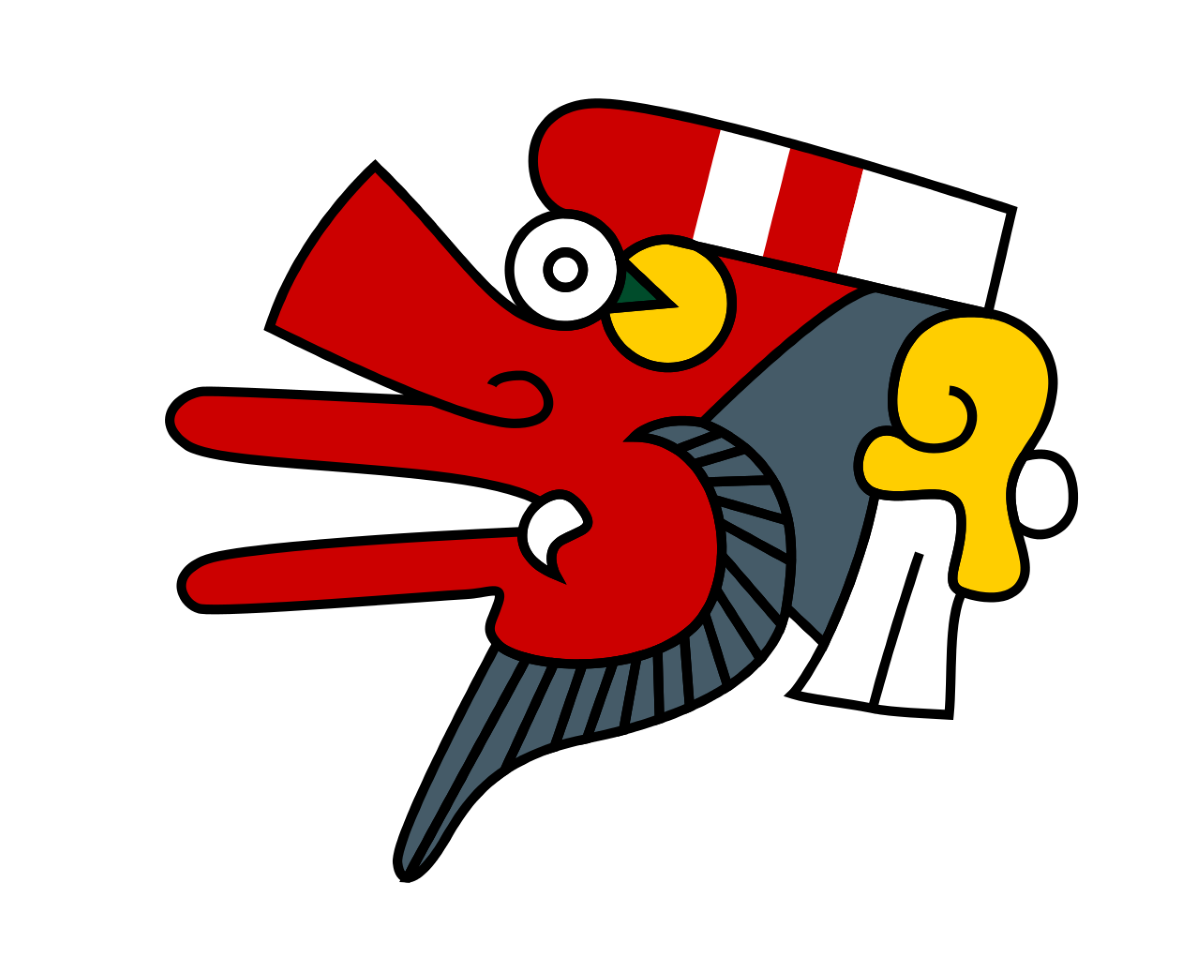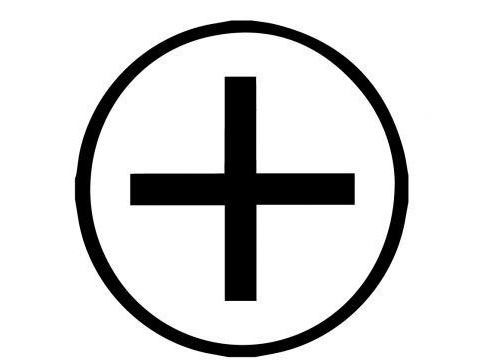14 Most Important Aztec Symbols And Their Meanings
Are you looking for the most important Aztec symbols and their meanings?
The Aztec culture flourished in central Mexico during the post-classic period from 1300 to 1521, before the Spanish colonization.
Aztec history is primarily known through indigenous writings, archeological finds from excavations, and eyewitness accounts by Spanish colonizers. Descriptions of Aztec culture and history from the 16th and 17th centuries were written by Spanish friars and Aztecs who knew the Spanish or Náhuatl language.
This Mesoamerican civilization is one of the most prominent in history. Both their mythology and culture were heavily into symbols. These symbols tell us how they lived before the Spaniards came to colonize this part of the world.
14 Most Important Aztec Symbols And Their Meanings

Here are 14 of the most important Aztec symbols and their meanings.
1. Miquiztli (Death)

Miquiztli is the Aztec death symbol. The word miquiztli connotes the state of being dead or the act of dying. It is derived from the Aztec word miqui, meaning “to die.”
Miquiztli is represented by a skull or death’s head. In the Aztec calendar, the Miquiztli day is governed by the moon deity called Tecciztecatl, the one who bestows life energy.
As a symbol, the mizquitzli denotes transformation or that brief moment between an old ending and a new beginning.
2. Ollin (Movement)

The Aztec symbol of movement, seismic changes, transmutation, and disorder, Ollin is associated with Xolotl, the god of sunset and shifting shapes.
Ollin means “movement” or “motion,” depicted in Aztec codices as two interlaced lines, each having two central ends.
Ollin is viewed as symbolic of four preceding suns or ages in history and the symbol itself is the fifth sun over the current world which, just like the previous one, will be destroyed through earthquakes that will lead to darkness and famine.
3. Calli (House)

Calli is the Aztec symbol for house. It is associated with Tepeyollotl, the god of echoes and earthquakes, as well as darkened caves and animals – jaguars in particular.
Depicted as a jaguar leaping towards the sun, Tepeyollotl is known in Aztec mythology as the “heart of mountains” and the 8th lord of the night or the god of the 8th hour of the night.
The Calli or house symbol is associated with family, rest, and tranquillity. It was considered by the Aztec people as the protector of day.
4. Ehecatl (Wind)

Ehecatl means “wind” in the Náhuatl language. In Aztec and other Mesoamerican cultures, Ehecatl is the god of air and winds. He is also known as Ehecatl-Quetzalcoatl.
With the wind blowing in all directions, Ehecatl was connected with all the cardinal directions. The Ehecatl symbol is depicted with two protruding masks through which the wind blows.
In the Aztec calendar, the day of Ehecatl was linked with inconsistency and vanity. It was a day to abandon bad habits, as well as a day to avoid working closely with others.
5. Atl (Water)

The Atl or Atl Tlachinolli symbol in Aztec culture signifies water. Translated from Náhuatl language, Atl Tlachinolli means “water, burnt or scorched earth.”
The Atl is associated with the deity Xiuhtecuhtli, the god of fire as well as the personification of life, creation, sustenance, and warmth. Atl was the water-and-fire or war (battle and holy war) symbol among the Aztec people.
In the Aztec calendar, Atl was deemed a day for conflict and confrontation, as well as resolving issues in the past.
6. Quiahuitl (Rain)

Quiahuitl in the Náhuatl language means “rain.” This symbol is linked with the Tonatiuh, the sun god of the Aztecs which was depicted as fierce and warlike. He was associated with human sacrifice as well as travel and education. Tonatiuh was also the protector of rain or quiahuitl.
7. Atlatl (Spear-thrower)
Atlal is an ancient and important weapon not just among the Aztecs but in every Mesoamerican culture.
Atlatl, also called a spear-thrower, is a spear with a grip at one end and a hook on the other. The hook is used to attach the spear that the throwers hurl, like they would a javelin. During the ancient Aztec times, warriors used this tool to hurl the spear at the enemies.
Atlatl was a powerful weapon and as such, it became symbol of strength, warfare, and even magical power for the Aztecs. The Atlal symbol was also associated with the sacrifice of captive enemies.
8. Tecpatl (Stone Knife)

The Tecpatl symbol from the Aztec culture was a flint or knife with a double-edged blade with elongated tips and a lance-shaped figure.
Traditionally used for human sacrifice during the Aztec times, the Tepactl knife was also used in battles by the jaguar knights who were members of the Aztec military elite. The Tecpatl symbol is linked with the concepts of origin and human sacrifice.
Tecpatl can be represented with half the top in the color of blood and the other half in white. These colors are symbolic of human sacrifice and the flint blade’s color, respectively.
9. Acatl (Reed)
Acatl in the Aztec language means “reed.” As a symbol, the Acatl is connected with justice and authority. In the Aztec calendar, Acatl is the day associated with Tezcatlipoca, the god of time, the night sky, and ancestral memory. This deity is linked with change caused by conflict.
10. Malinalli (Grass)

Malinalli or the Aztec grass symbol is associated with rejuvenation and tenacity.
It is a day in the Aztec calendar said to be one for perseverance, creating alliances, and freedom from oppression. This day is governed by Patecatl, the god of medicine, healing, and fertility. Patecatl is also the “lord of the root of pulque” and the discoverer of peyote.
11. Quetzalcoatl (Feathered Serpent)

The feathered serpent started as a symbol of Teotihuacan. It became symbolic of alliance before turning into Quetzalcoatl, the god of war, who then reappeared as a god of a united humanity.
The Quetzalcoatl symbol denotes the union of earth and sky, a complimentary dualism represented by the aerial environment of the bird feathers and the earthly habitat of the snake.
12. Cuautli (Eagle)
Cuauhtli or eagle, as per the Aztec calendar, is an auspicious day celebrating the eagle warriors who, like the jaguar knights, were members of the Aztec military elite.
This day is protected by Xipe Totec, the god of seeds or spring, rebirth and regeneration, and transformation or the shedding of skin. Xipe Totec conveys the idea of death and rebirth by wearing the flayed skin of a sacrificial victim.
Cuauhtli as a symbol is associated with freedom and equality.
13. Cipactli (Crocodile)

Cipactli, which means “crocodile” or “caiman” in the Náhuatl language, symbolized the earth floating in the primeval waters in Aztec cosmology.
Cipactli was a primeval sea monster, with features of a crocodile, a fish, and a frog or toad. Its gender is not known. It was forever hungry, with mouths all over its body. The deities Tezcatlipoca and Quetzalcoatl created the earth from Cipactli’s body.
Cipactli or crocodile was the first day in the sacred Aztec calendar, associated with honor, advancement, recognition, and reward.
14. Itzcuintli (Dog)

Dogs have always been held in high regard in Mesoamerican folklore and myth for the belief that they carry the newly departed across a river (or other body of water) in the afterlife. In the Aztec calendar, Itzcuintli or dog was protected by Mictlantecuhtli, the god of the dead.
Dogs are linked with funerals, wakes, and remembrance.






